Last updated on March 30th, 2025 at 11:38 am

Looking for a local’s guide to the best Mount Rainier hikes? Perfect, we’ve got you covered!
Hi there! I’m the Locals Know Best podcast host, Cindy.
I am a massive fan of outdoor adventure and have spent years exploring all over, including time as a full-time RVer and Appalachian Trail thru-hiker.
Years of adventuring have taught me one fundamental lesson: locals ALWAYS know best.
Locals Know Best Podcast Ep. 031: Hiking Above the Clouds in Mount Rainier National Park
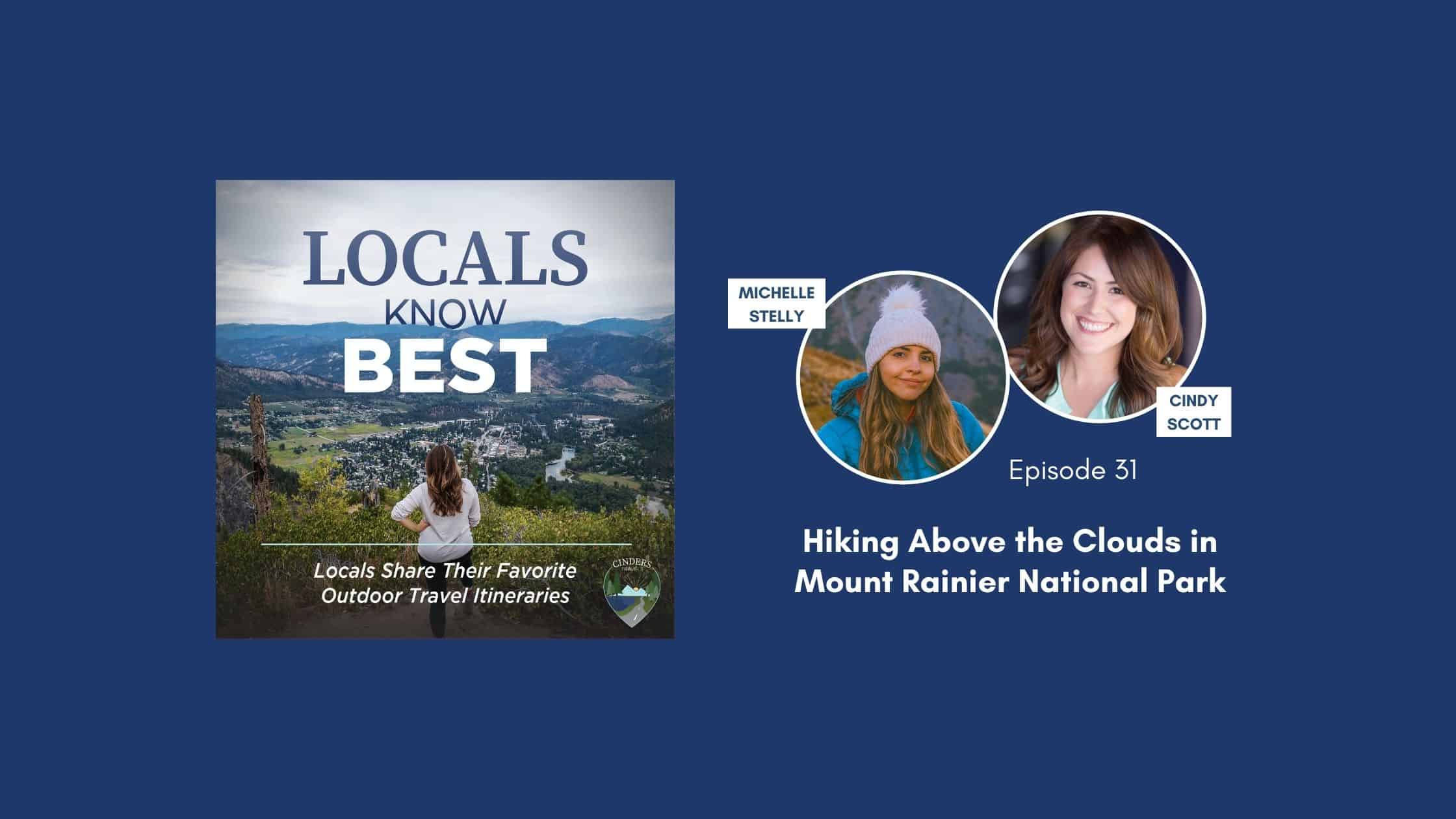
This article summarizes the thirty-first episode of the Locals Know Best podcast!
Every podcast episode dives into one local’s perfect day of outdoor adventure in their area.
This episode embraces being outdoorsy in Washington’s three national parks but with an emphasis on exploring Mount Rainier National Park!
Join local insider Michelle of The Wandering Queen and me as we discuss insider tips to make your time more enjoyable while adventuring throughout Mount Rainier, including the park’s best waterfalls and hidden gem trails from a local who frequents the park often.
Listen to the Episode
Click here to listen to this episode of Locals Know Best!
About Michelle Stelly
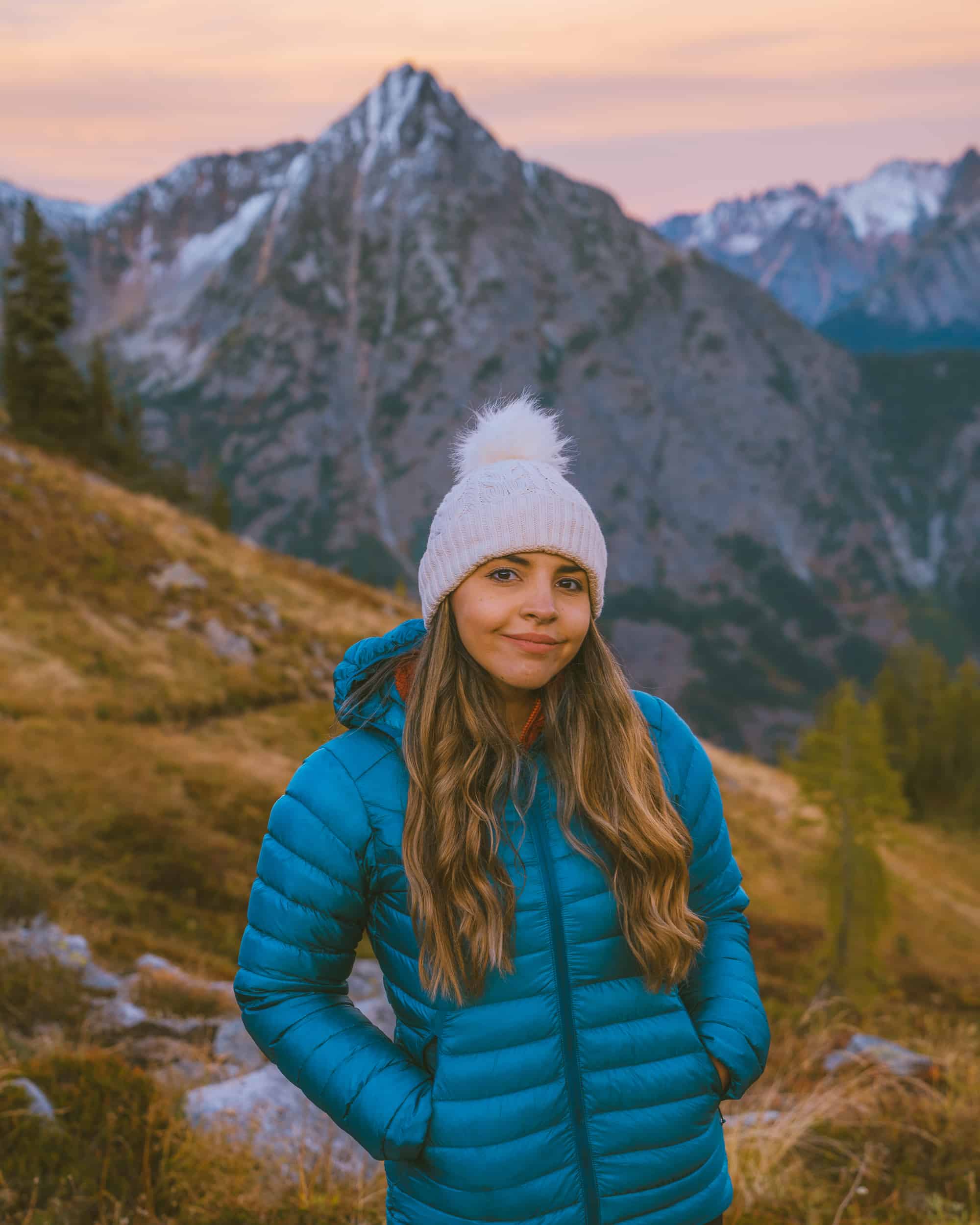
Learn more about Michelle Stelly at TheWanderingQueen.com.
Michelle runs The Wandering Queen, a travel blog to help fellow women adventurers travel the globe.
She’s a Texan-Panamanian who is passionate about adventure travel, as well as an expert on all things hiking, backpacking, and camping.
Michelle has been to 23 U.S. National Parks and has a goal in life that is very similar to mine: to inspire and help get people outdoors!
About Mount Rainier National Park
Michelle starts the episode by stating that Mount Rainier is her favorite mountain in the world. She feels it’s the perfect place to visit to get outside and simply enjoy being in nature.
If you don’t want to go hiking, you can still visit the park to enjoy the scenery or a picnic.
But if you do love hiking, it’s one of the best places in the state because of its epic terrain, scenery, and breathtaking waterfalls.
Things to Know Prior to Visiting Mount Rainier National Park
Planning a visit to Mount Rainier National Park involves considering a few things to ensure your trip is a safe and fun experience.
The park entrance fee, timed entry permit, unpredictable weather, and road closures make preparation essential.
Mount Rainier National Park Entrance Fee
Once you arrive at the national park, there’s a fee to pay. Walking or cycling costs $15, motorcycles are $25, and private vehicles with 15 or fewer people are $30.
Another option if you plan on visiting Mountain Rainier frequently is the Mount Rainier Annual Pass, which costs $55 and gives you access all year round.
Your final option is to go for a $80 Interagency Pass, which is accepted at all U.S. national parks for a year.
While you can get your pass on the spot from a ranger, booking it online in advance is another option.
Timed Entry Permit
Because of a rise in visitors over the past decade, Mount Rainier now asks for timed entry reservations during the busy season. This is to help ease traffic and reduce wait times in the park.
From May 24th to September 2nd, timed entry reservations are required for the Paradise Corridor between 7:00 AM and 3:00 PM. Similarly, for the Sunrise Corridor, you’ll need reservations from July 3rd to September 2nd, also between 7:00 AM and 3:00 PM.
Remember, you must secure your timed entry reservation before heading to the park. These slots tend to fill up quickly, so it’s a good idea to snag them as soon as they become available for your chosen date.
Road Closures
In the mountains, roads can close at different times of the year. In winter, they often shut down because of snow or avalanches. Before you go, checking for road closures on the National Parks Services website or social media is wise. Stay updated so you know what to expect when you visit.
How to Get to Mount Rainier National Park
The best way to reach Mount Rainier National Park is by using your own vehicle.
If you’re flying into the region and plan on visiting the park, it’s best to arrive at Seattle-Tacoma International Airport (SEA) and then drive from there. The drive usually takes 2 hours and 10 minutes to reach the park entrance.
Entrances
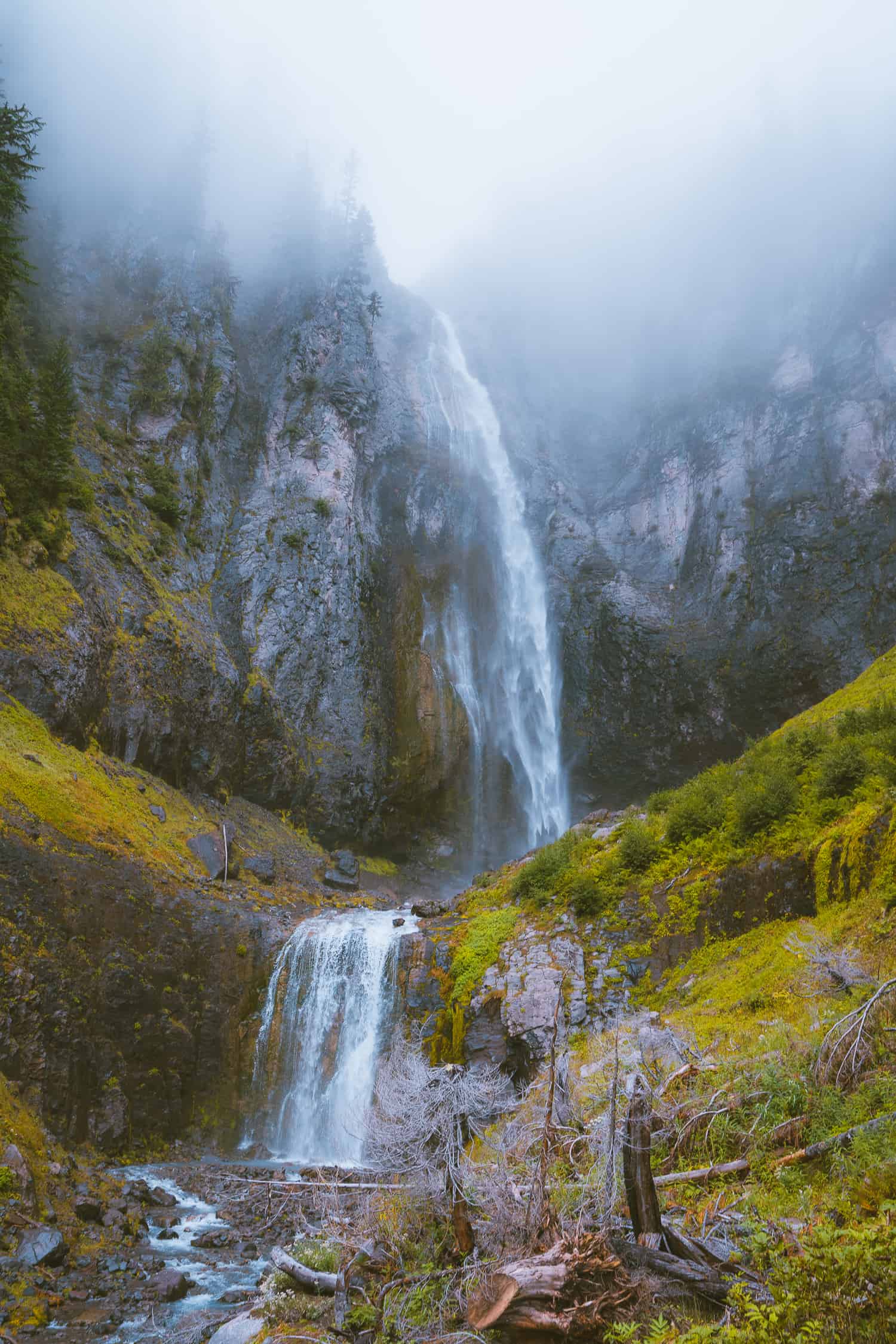
You can choose from four main entrances to enter Mount Rainier National Park. These entrances include Nisqually, Carbon River, White River, and Stevens Canyon Road. The entrance you pick depends on your direction of travel and the specific sights you’re eager to explore the most.
The Nisqually entrance is super popular because it’s open all year. It’s a great starting point to see some of the most fabulous waterfalls in the state and the national park.
Michelle suggests entering this way and hitting up the Comet Falls trail. It’s a little challenging but definitely worth it because the waterfall is huge. Plus, it’ll be on your way to the Paradise Visitor Center (aka the Henry M Jackson Memorial Visitor Center.)
After you finish that hike, Michelle says to continue to the Narada Falls Viewpoint. It’s only a short walk, and the waterfall is stunning. It’s also on the way to the visitor center.
When is the Best Time to Hike in Mount Rainier National Park?
Though Mount Rainier can be visited in any season, Michelle says summer is the best time. This is due to the blooming wildflowers, minimal snow, stunning views of Mount Rainier, the presence of waterfalls and lakes, and longer daylight hours, allowing for more exploration.
Fall is a close second and often underrated, with Michelle praising its beauty, especially in October when trees transform from green into vibrant red and yellow colors. The bonus is the minimal crowds during this season.
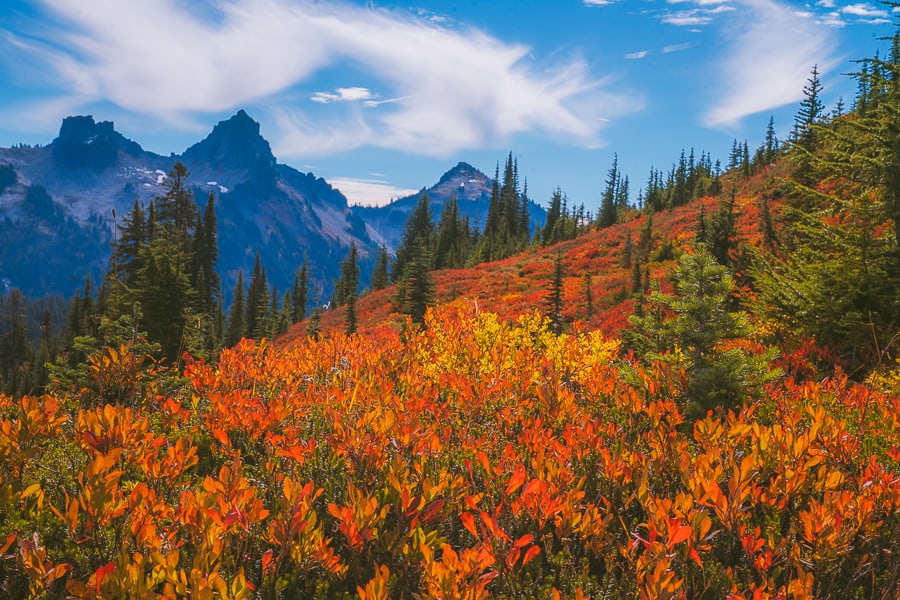
Spring and winter visits are more challenging due to avalanche risks, with only the Paradise area open. Michelle recommends checking avalanche zones before attempting snowshoeing or winter hiking. One of her tips was to ask rangers which trails are safe so that you can avoid avalanche-prone areas.
Michelle’s least favorite season in Mount Rainier is spring because much of the park is still covered in snow, and many trails are closed. However, with proper advice from rangers, a spring visit can still be fantastic.
Having visited in June, I found some trails closed but, with advice from rangers, discovered some open trails to try out.
Regardless of the season, a key goal is catching a clear view of Mount Rainier.
Michelle suggests using windy.com to predict cloud movement to have the greatest odds of mountain visibility during your visit.
Michelle also suggests having alternative hikes that don’t rely solely on seeing Mount Rainier. It’s a smart move because the region often experiences cloudy and rainy weather.
An excellent alternative hike she recommends is the Bench and Snow Lakes Trail because the elevation is lower on that trail, so you can often still see the mountains in that area on days when the views are cloudy elsewhere.
Based on my trips to the park, here’s a tip: when planning your visit to Mount Rainier National Park, set aside a few days to explore. It’s risky to depend on just one day. If the weather gets cloudy, you might miss the main attraction, Mount Rainier.
Plan at least two or three days to up your chances of seeing the mountain in all its beauty.
Best Hikes in Mount Rainier National Park in the Paradise Area
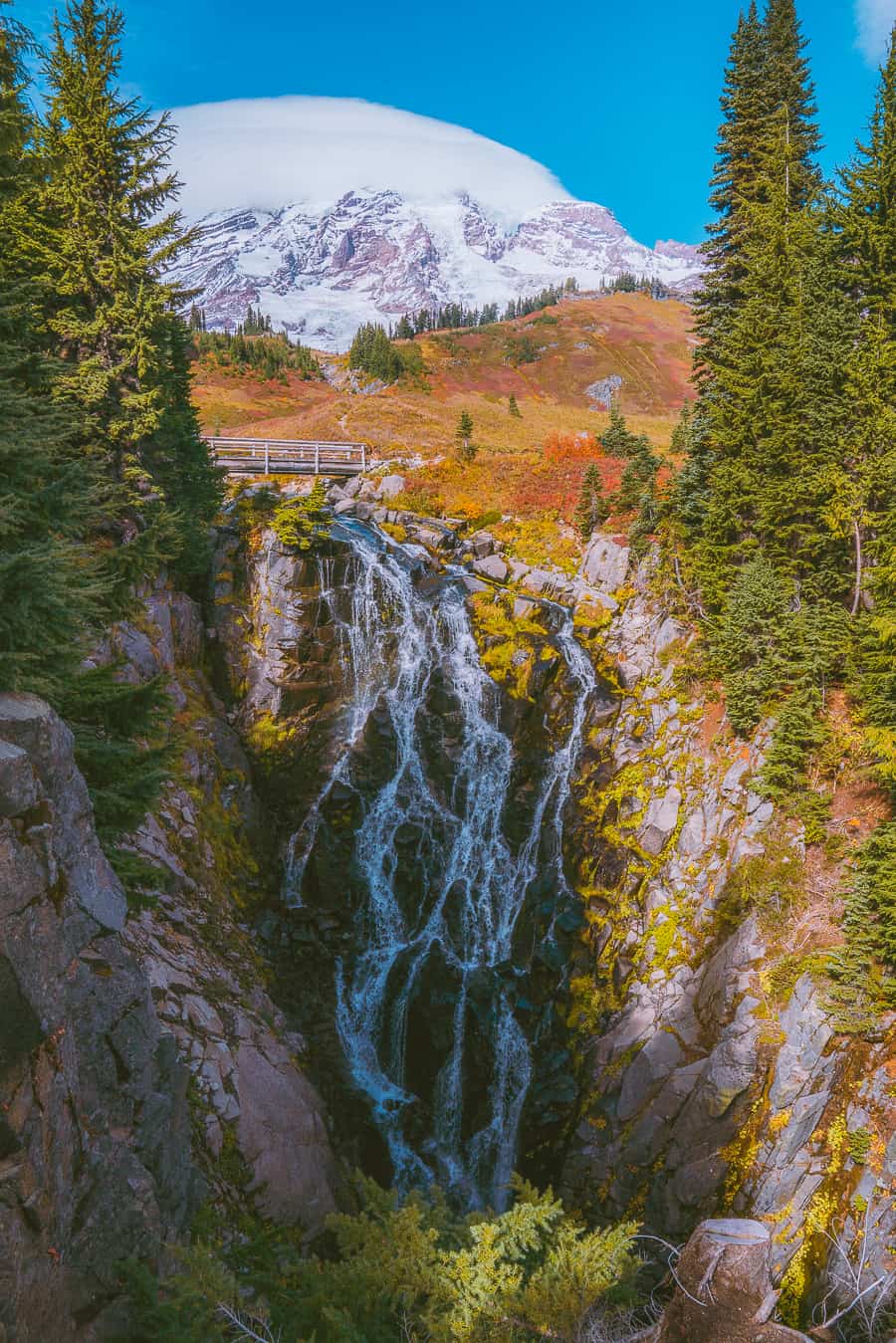
One excellent hike in the Paradise Area is Reflection Lakes, where you can grab a photo of Mount Rainier’s reflection in the water. It is especially beautiful at sunset.
Another good one is the Skyline Trail Loop, but it can get crowded in the summer. It’s famous for its incredible views, including a view of gorgeous Myrtle Falls.
Pinnacle Peak is a personal favorite, which was recommended to me by a park ranger and turned out to be fantastic. We got some of our best photos there.

Best Hikes in Mount Rainier National Park in the Sunrise Area
The Emmons Moraine Trail stands out as a fantastic hike in the Sunrise Area, thanks to the charming little lake it leads to.
Another excellent choice is the Mount Fremont Lookout Trail.
Michelle suggests it’s perfect for catching a sunset and, if lucky, a cloud inversion! This moderate 5.6-mile round-trip hike offers a delightful experience, but if you’re planning to hike during sunset, be sure to bring a flashlight for your trip back.
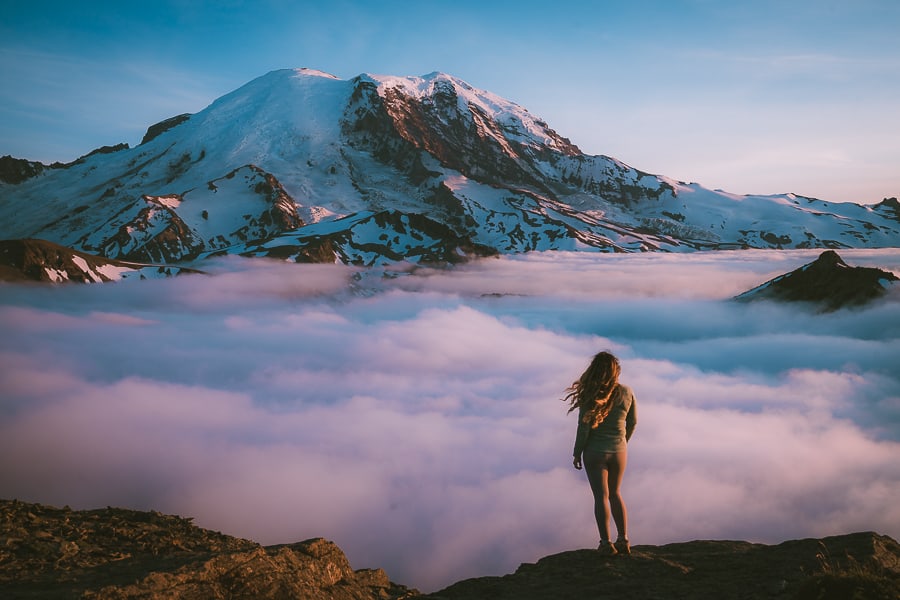
Best Hike During Wildflower Season
Check out the Naches Peak Loop Trail during the blooming season for the best wildflower views.
It’s perfect for spotting bright purple, blue, and other colorful wildflowers while getting a great look at Mount Rainier, surrounded by the blossoms.
Best Hike for Alpine Lake Views
For incredible Alpine Lake views, try the Emmons Moraine Trail. The lake is famous for its bright blue-green color.
The Best Photo Spots in Mount Rainier National Park
Pinnacle Peak is my go-to spot for jaw-dropping photos in the park; it’s just crazy beautiful.
You’ve also got Reflection Lakes, perfect for capturing Mount Rainier’s reflection.
Michelle recommends not missing out on the incredible Instagram shots you can get at Mount Fremont Fire Tower Lookout and Tolmie Peak Fire Lookout Trail.
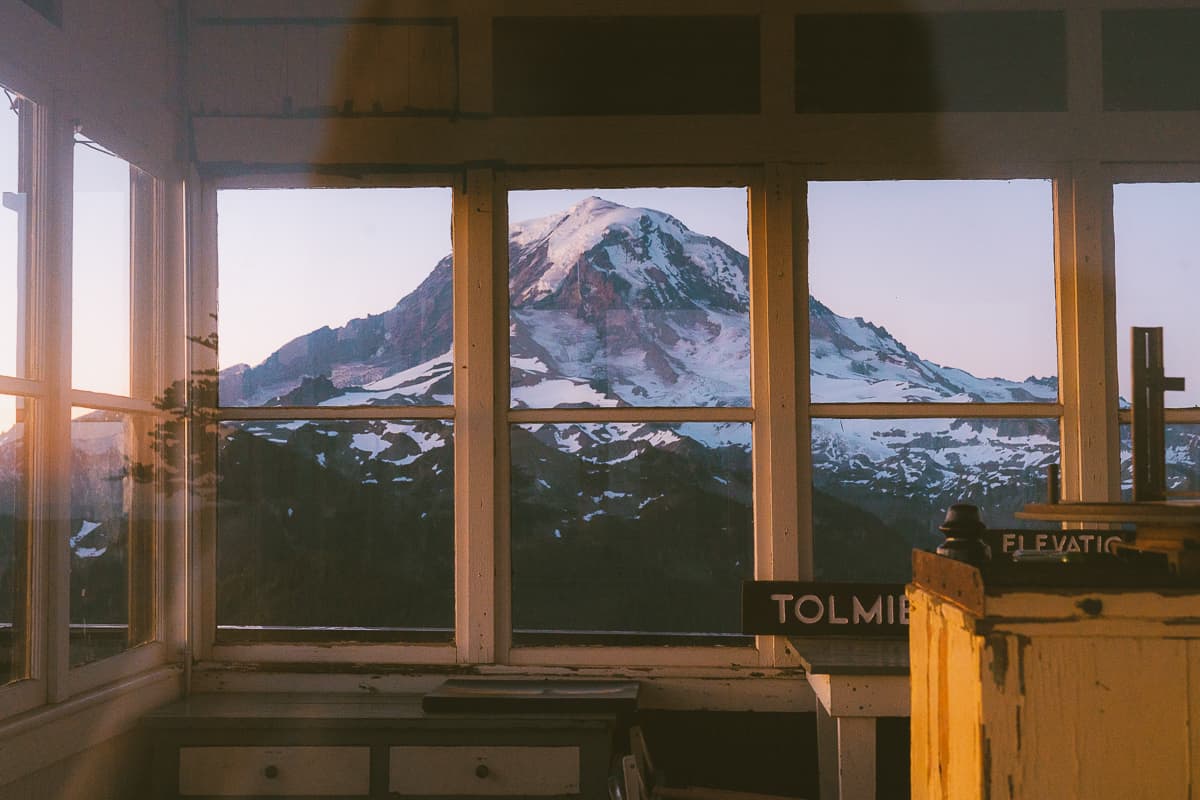
An Overrated Spot in Mount Rainier National Park (And Where You Should Go Instead)
According to Michelle, a spot that tends to get too much attention in Mount Rainier National Park is the Grove of the Patriarchs Loop. It’s often crowded.
Instead, consider going to nearby Silver Falls, which is much less busy and provides a stunning waterfall!
Best Backpacking in Mount Rainier National Park
Obtaining a backpacking permit is essential for backpacking in Mount Rainier National Park, and it can be tricky to secure. Read more here for details on how to go about securing one.
The Wonderland Trail is a popular choice for many backpackers. Keep reading for some information on two different backpacking spots that Michelle recommends.
Wonderland Trail
The Wonderland Trail is super popular for backpacking in Mount Rainier. It’s a big loop, over 85 miles, taking you all around the mountain. It’s a beautiful but challenging route, so planning ahead is essential. It provides considerable stunning views of the mountain, and many people have great things to say about it.
Summit Lake
Summit Lake is actually located outside the park, and the good news is you don’t need a permit to hike it. The trail is approximately 6 miles out-and-back, making it a fantastic option for backpacking while still enjoying Mount Rainier’s epic views. It holds a spot as one of Michelle’s top backpacking destinations in the area.
Tips for Getting into Backpacking
Michelle and I are avid backpackers, and we have some valuable tips for those looking to go backpacking.
Michelle’s first suggestion is to invest in a high-quality backpack, as it can make a significant difference on the trails. We both recommend trying out backpacks in stores to ensure a great fit and maximum comfort. We suggest heading to REI and consulting with their experts to find the perfect fit.
🎒 You can check out my advice on choosing a backpack here. 🎒
Another important tip is to ensure that your backpack weighs less than 20% of your body weight. Keeping it light prevents discomfort during the hike, ensuring you enjoy the experience.
Other Things to Do at Mount Rainier National Park
Apart from hiking, backpacking, and camping, Mount Rainier National Park offers a few other activities. You can also:
- Cycle
- Climb
- Fish
- Have a picnic
- Drive around, soaking in the views.
Other Things to Do at Mount Rainier National Park
If you’re looking for additional trails not covered in the podcast, a few others are certainly worth mentioning.
I highly recommend exploring the Nisqually Vista Trail, Spray Park Trail, and Glacier Basin Trail.
The Nisqually Vista Trail is a short 1.1-mile loop with a gentle elevation gain of under 200 feet. It’s an ideal hike for a quick 30-minute adventure and can be enjoyed year-round. Many people opt for this trail during spring and winter, sometimes using snowshoes.
For a more challenging option, consider the Spray Park Trail. This approximately 7-mile out-and-back trail boasts an elevation gain of almost 2,200 feet, making it a great choice for a solid workout and offering excellent views of wildflowers.
The Glacier Basin Trail is another demanding trek, measuring around 8 miles out-and-back with a substantial elevation gain of over 2,300 feet. Keep an eye out for mountain goats, as spotting them along this trail is not uncommon.
Where to Stay in Mount Rainier National Park
When considering accommodations within Mount Rainier National Park, you have several options.
The National Park Inn and Paradise Inn provide comfortable lodging, each offering a unique experience.
If camping is more your style, Cougar Rock Campground, White River Campground, and Ohanapecosh Campground are great choices, allowing you to be in nature while enjoying the convenience of on-site camping facilities.
Whether you prefer the rustic charm of the inns or the outdoor experience of camping, Mount Rainier National Park offers a range of accommodation options to suit different preferences.
Where to Stay Near Mount Rainier National Park
If staying outside of the park, there are a couple of towns near Mount Rainier National Park, with Ashford and Packwood being two of the main ones.
Packwood
Michelle thinks staying in Packwood is a good idea. There’s a cute place called Little Owl Cabin, just about an hour and a half away from the park. It has small cabins with hot tubs and is the perfect place to relax after your park adventures.
Summit Lake Camping
For those interested in backcountry camping, Summit Lake Camping is an option. It’s a stunning place to set up camp close to Summit Lake.
Crystal Mountain Resort for RVs
A few Septembers ago, my husband and I chose to stay at the Crystal Mountain Resort. I enjoyed it because of its proximity to the park, making it a convenient and comfortable place to stay. It felt like we had our own entrance to the park, creating a memorable experience. If you have an RV, I recommend exploring this option.
Where to Eat Near Mount Rainier National Park
Several dining options exist near Mount Rainier National Park, ranging from local joints and breweries to various restaurants. Check out Michelle’s regional favorites, as I share them below.
Packwood Brewing Co.
Packwood Brewing Co. is a great spot to chill after a long day of hiking in Mount Rainier. They’ve got tasty craft beers and some good food options. The best part is the outdoor seating, making it perfect for a sunny day.
Cliff Droppers
Another spot Michelle suggests is Cliff Droppers, which is renowned more for its food than drinks. It’s an excellent place to visit if you’re craving burgers.
Tips for Mount Rainier Hikes
With insights from Michelle, a local, and my own experiences visiting the park several times, we have a few valuable tips to share. Next, I’ll highlight some essential information to keep in mind before your visit.
What Should I Pack for a Mount Rainier National Park Day Hike?
When prepping for a day hike at Mount Rainier National Park, include some essentials for a great time.
Pack sunscreen and insect repellent, and remember to stay hydrated. Also, toss in some snacks to ensure you have the energy to fully enjoy the views of Mount Rainier. These basics will provide a comfortable and enjoyable hike in the stunning park.
Where are Dogs Permitted?
Dogs are permitted in national parks in parking lots, campgrounds, and paved roads open to public vehicles.
However, pets are forbidden on all of Mount Rainier’s trails and in the park’s wilderness areas.
For specific guidelines, head to the National Parks Services website to see where exactly your pet can go.
Leave No Trace
Be sure to follow Leave No Trace principles, the golden rules for outdoor adventures.
It’s important to be kind to nature and ensure you keep the place you visit beautiful for the next visitor. So, pick up your trash, stick to the trails, and give the wildlife their space. This way, you and I can continue to enjoy the national parks in Washington and throughout the United States.
FAQs About Mount Rainier
Next, I’ll answer a few frequently asked questions about visiting Mount Rainier.
How Many Days Should I Spend in Mount Rainier National Park?
You should spend at least 2 to 3 days in Mount Rainier National Park. This will give you good odds of having a clear view of Mount Rainier on at least one of those days.
What is the Best Hike in Mount Rainier National Park?
Skyline Loop is considered by many to be the best hike in Mount Rainier National Park.
Which Section of Mt Rainier is Best?
The Paradise area is often considered the best section of Mt Rainier.
Do I Need Bear Spray in Mt Rainier?
You do not need bear spray in Mount Rainier, but it is worth considering if you plan on backcountry hiking or camping.
Black bears and mountain lions are the animals that concern visitors the most when visiting Mount Rainier. By reading more here, you can become more aware of what to do if you encounter either of these animals.
Michelle’s Mount Rainier National Park, WA Two-Day Travel Itinerary Map
Uncovering Washington’s Other Two National Parks
Did you know Washington has three national parks? While we mainly discussed Mount Rainier in this podcast episode, the other two are worth checking out! Keep reading as I share some incredible spots and hikes in each park.
Olympic National Park
Olympic National Park has some incredible places to check out. There are great beaches where the ocean meets the rugged coast. The Hoh Rainforest is a lush and vibrant spot to explore. For amazing views, head to Hurricane Ridge. And if you’re into hiking, give the Hurricane Hill Trail a shot for some picturesque views.
North Cascades National Park
In North Cascades National Park, you’ve got some phenomenal spots to explore. Check out Diablo Lake; it’s got incredible turquoise waters that are just stunning. If you’re up for an adventure, try the Hidden Lake Lookout Trail for amazing mountain and lake views. And for a picturesque hike, Maple Pass Loop takes you through meadows with fabulous views of the jagged peaks. These places add to the beauty of North Cascades National Park, making it a perfect spot for hikers and backpackers.
Conclusion: A Local’s Guide to the Best Mount Rainier Hikes
Exploring Mount Rainier National Park offers many fun outdoor activities and stunning views. From the well-known Skyline Trail Loop to hidden spots like Silver Falls, there’s something for everyone, whether you love hiking, backpacking, or just enjoying a picnic.
With tips from locals who know best, like Michelle, your adventure in this beautiful national park is bound to be memorable.
Would You Rather Listen to This Information? Give the Podcast Episode a Listen!
Click here to listen to this episode of Locals Know Best!
Thanks for Listening!
We love our listeners! If you enjoyed this episode, please consider leaving a review in Apple Podcasts. It’s super easy; click here and go to “ratings and reviews.” I read and appreciate every single one! Each review helps new listeners find the podcast. Thank you!!
Follow Cinders Travels on Facebook or Locals Knows Best Podcast on Instagram for Locals Know Best updates.
You’ll Also Enjoy:
👉 Locals Know Best Podcast Ep. 026: North Umpqua, Oregon, The Gateway to Crater Lake
👉 Locals Know Best Podcast Ep. 019: Shawnee National Forest, Illinois, Off Most People’s Radar
👉 Locals Know Best Podcast Ep. 008: Exploring Southern Utah’s Most Beautiful Hidden Gems
- Hiking the Appalachian Trail: Week 3 Thru-Hike Journal - March 27, 2025
- Best Appalachian Trail Shoes for Long-Distance Hiking - March 4, 2025
- Backpacking Clothes for an Appalachian Trail Thru-Hike - March 4, 2025
